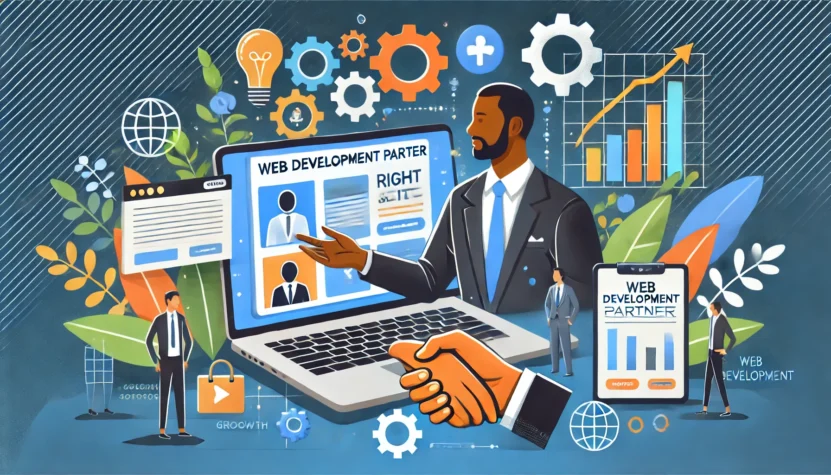If you’ve been thinking about launching a website or revamping an old one, you might have noticed the price tags look a little different compared to just a few years ago. As someone who’s spent years in the digital space, I know how confusing it can feel to figure out what’s worth the investment. Let’s walk through the major changes shaping website development costs for 2025 and what you should factor into your budget.
Why Website Costs Are Changing

Technology evolves at lightning speed, and so does everything tied to it. Websites in 2025 aren’t just static pages anymore; they’re dynamic hubs built to serve personalized, lightning-fast, and highly interactive experiences. With greater expectations comes higher complexity, which naturally impacts the bottom line.
But it’s not just about the tech. Shifts in design trends, user behaviors, and even environmental concerns are shaping the cost landscape. Sustainable web design is growing in importance, with developers prioritizing energy-efficient coding practices. This means your website might be built to consume less energy while still delivering exceptional performance.
Businesses like Nubelab Web Design have been innovating to ensure websites not only look stunning but also function as smart tools for growth. From sleek designs to seamless functionality, the way we approach websites now is light years ahead of what was considered cutting-edge just five years ago.
What’s Driving Up Website Development Costs
Several factors are contributing to the rising costs of website development. Here’s a detailed look:
1. Customization Is the Name of the Game
Gone are the days when cookie-cutter templates ruled the web. Companies now demand tailored solutions that perfectly align with their brand identity and audience expectations. A unique design isn’t just about aesthetics—it’s about creating a memorable experience that connects emotionally with users. Crafting such designs requires intensive collaboration, which takes more time and effort.
2. Functionality Expectations Are Higher
Websites today are more than digital brochures. They’re dynamic platforms where customers shop, engage, and even troubleshoot issues. Features like live chat, interactive forms, and seamless integration with CRMs, e-commerce systems, and analytics tools have become must-haves. Each additional feature adds to the time and expertise needed to bring a website to life.
3. AI and Automation Are Game-Changers

Artificial intelligence isn’t a futuristic luxury anymore; it’s becoming a standard part of many websites. AI tools can deliver personalized recommendations, automate customer service, and even help businesses make smarter decisions using predictive analytics. Integrating AI requires cutting-edge development expertise, which adds a premium to costs.
4. Performance Optimization Matters More Than Ever
Nobody has patience for slow websites, and search engines are prioritizing speed like never before. Image optimization, advanced caching, and code refinement are all part of making sure websites run at lightning-fast speeds. Developers now spend extra hours fine-tuning performance, and those hours aren’t free.
5. Ongoing Maintenance Is Non-Negotiable
Think of a website like a plant. It might look great when it’s fresh, but without care and attention, it can wither over time. Regular maintenance includes software updates, security patches, and ensuring compatibility with new devices and browsers. This ongoing work is essential, so it’s something you’ll want to account for in your budget.
Budget Breakdown: How Much Will You Need?

Website costs can vary widely, depending on the complexity and scope of the project. To give you an idea:
1. Small Business or Portfolio Websites
- Price Range: $2,000–$10,000
- Includes: A clean design, mobile responsiveness, a simple content management system (CMS), and basic hosting. Perfect for individuals or small businesses.
2. Mid-Sized Business Websites
- Price Range: $10,000–$50,000
- Includes: Custom design tailored to branding, advanced features like e-commerce, and integrations with third-party systems. These are ideal for growing businesses with more complex needs.
3. Large-Scale or Enterprise-Level Sites
- Price Range: $50,000 and up
- Includes: Scalable infrastructures, custom database development, AI-powered tools, and enterprise-grade security measures. Think major corporations or organizations that rely heavily on their online presence.
Remember, these are just starting points. Factors like the development team’s expertise and your specific requirements will influence final costs.
How to Prioritize Your Budget
When planning a website, it’s tempting to want every possible feature right away. But here’s the reality: you can’t (and shouldn’t) try to do everything all at once. Let me share some advice:
- Start Small, Scale Later: Begin with the essentials. Launching a sleek, functional site now is better than waiting years for perfection. You can always add more bells and whistles down the road.
- Focus on UX: A fancy design doesn’t mean much if visitors can’t find what they’re looking for. Intuitive navigation, clear calls to action, and accessible layouts make a massive difference.
- Don’t Skimp on Security: Data breaches are costly and damaging to trust. Invest in robust security from the start to protect your users—and your reputation.
- Invest in Analytics: Tools like Google Analytics or custom dashboards can give you insights into how people interact with your site, helping you make smarter decisions as your business evolves.
Choosing the Right Web Development Partner

Picking the right team is like choosing a co-pilot for your journey. You want someone who understands your vision and knows how to bring it to life without unnecessary complications.
One example of a trusted partner is Nubelab Web Design. Their team combines eye-catching design with smart, functional solutions that help businesses grow. They’re experts in crafting websites that don’t just look good but also deliver results.
What’s Worth the Investment?
Here’s where I think your money should go for the best returns:
- Responsive Design: Make sure your site works beautifully across devices. A poor mobile experience can cost you valuable traffic.
- SEO Optimization: Help your site rank higher in search engine results with proper SEO architecture baked in from the start.
- Speed and Performance: Every extra second of load time costs you visitors. Speedy websites keep users engaged.
- Accessibility: Designing with inclusivity in mind ensures all users, including those with disabilities, can interact with your content.
Final Thoughts
Building a website in 2025 is no longer about checking off a box—it’s about creating a meaningful digital experience. The rising costs reflect the greater value websites bring to businesses today. Think of it as an investment in growth, not just another expense.
Take the time to map out your priorities and choose a team that will help you achieve your goals. Whether you’re starting small or going big, a strong online presence can open doors you didn’t even know existed. Happy planning!
Related Posts:
- How Many Insurance Policies Can You Have at Once?…
- Revenue Growth Hacks for Small Businesses ─ Quick…
- Best Option Trading Books to Help You Master the…
- 10 Heart Attack Survivors in the Music Industry You…
- Dating in Germany as a Foreigner – The Unwritten…
- Top 10 Celebrity Net Worths in 2025 ─ Who's Leading…









